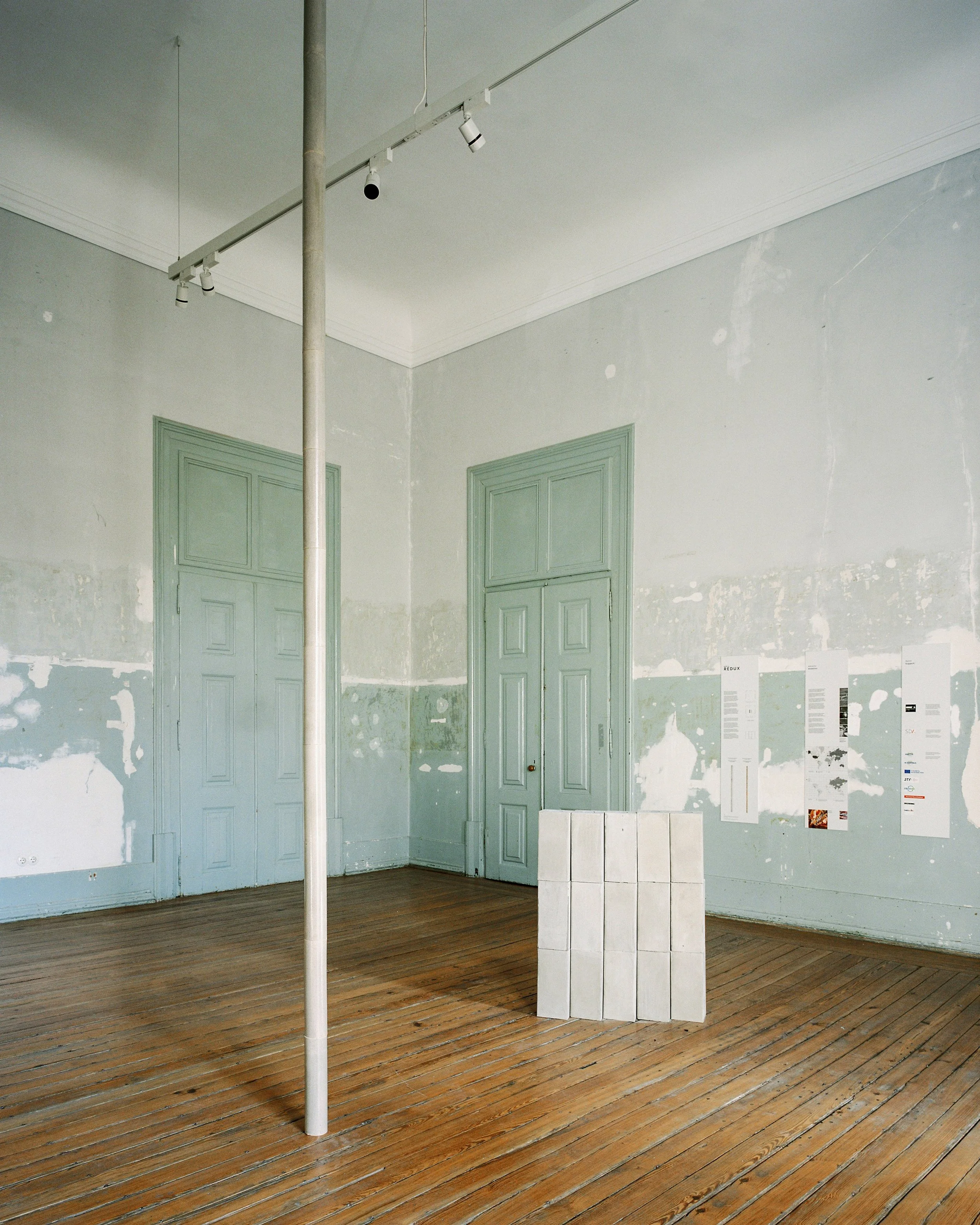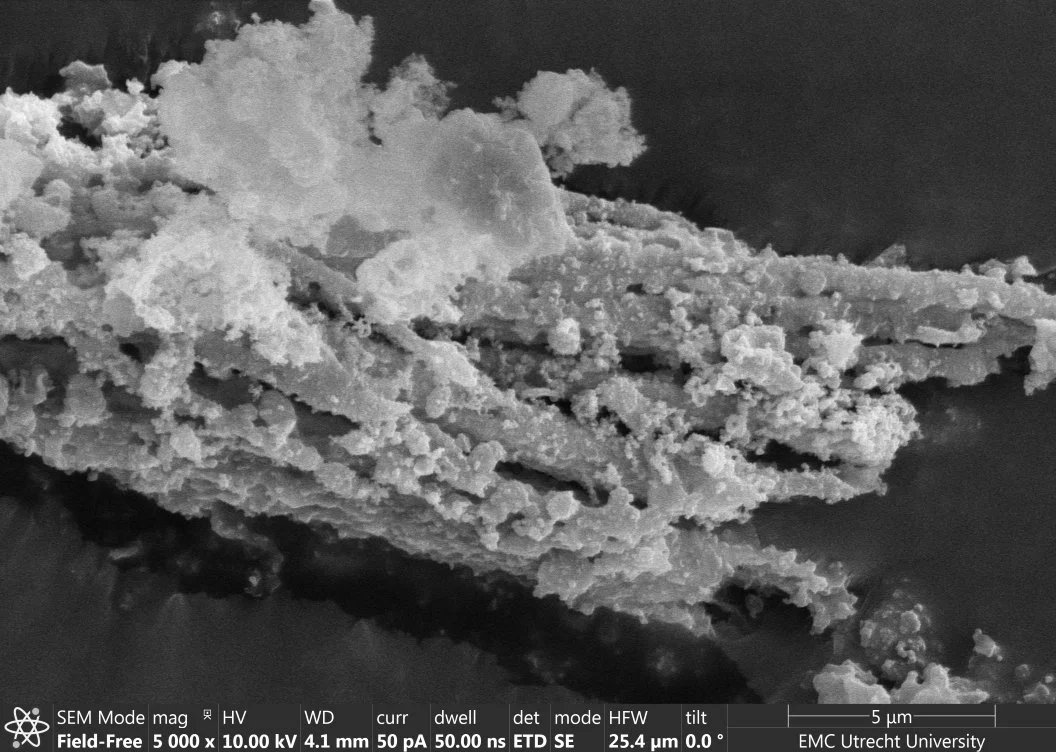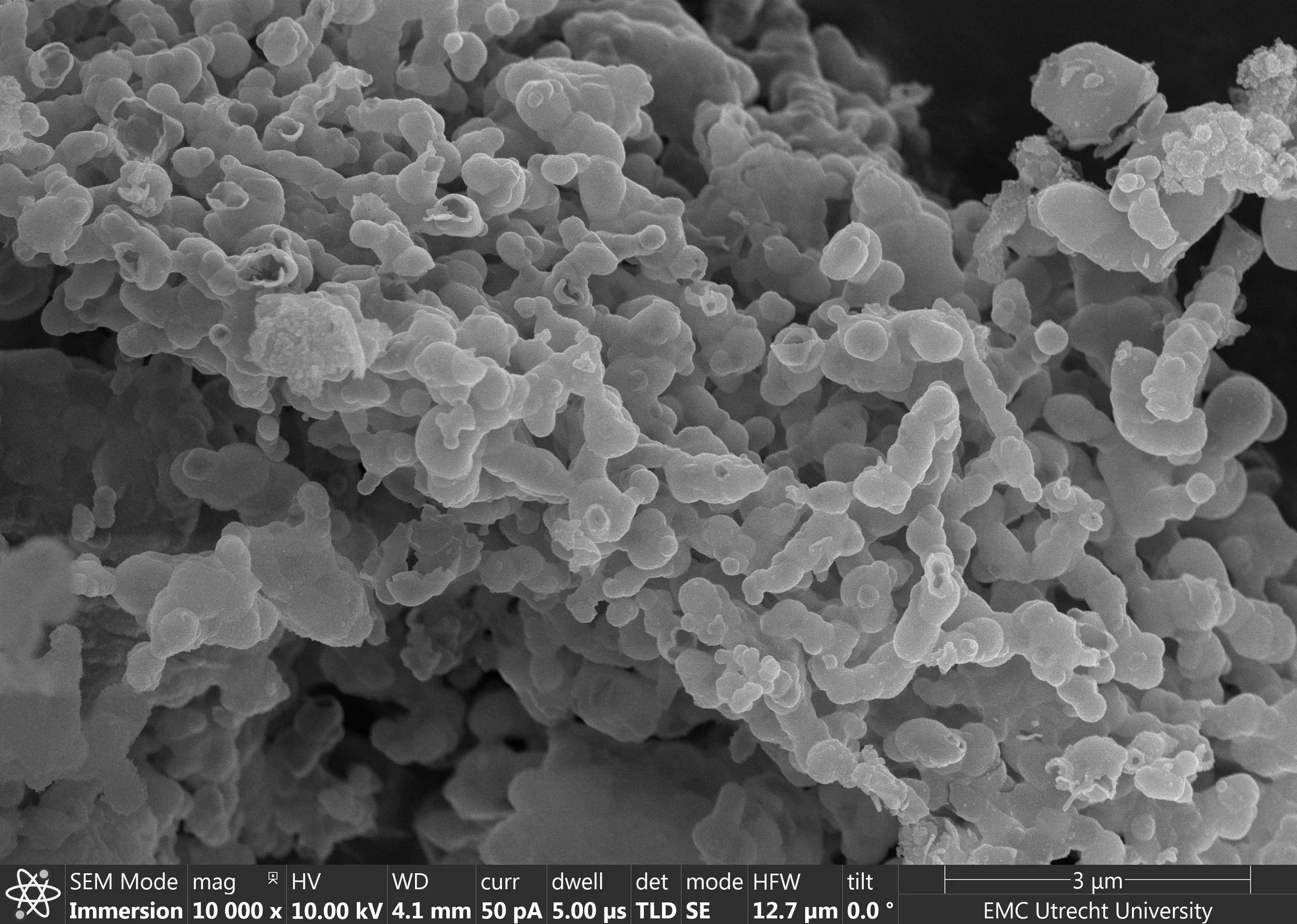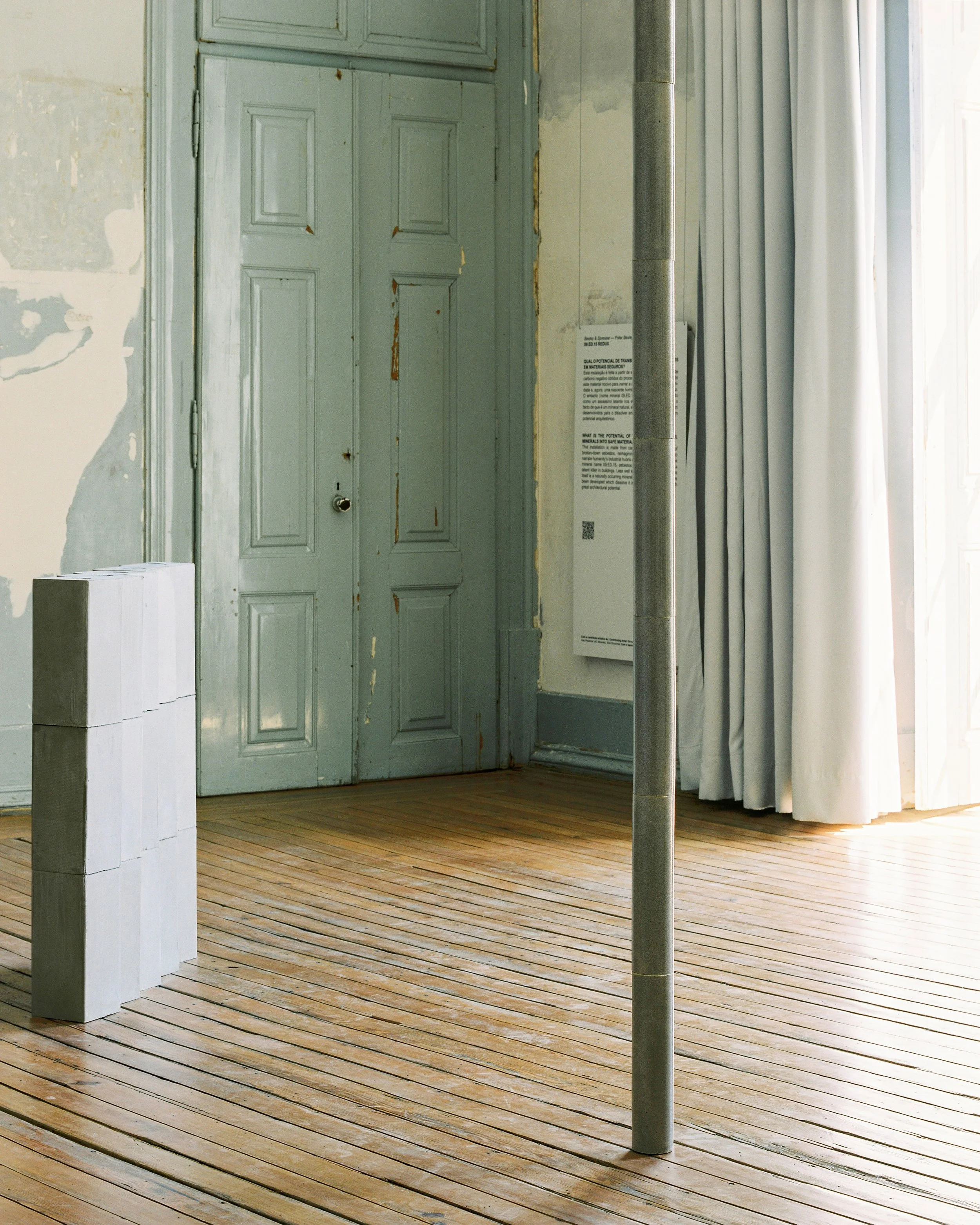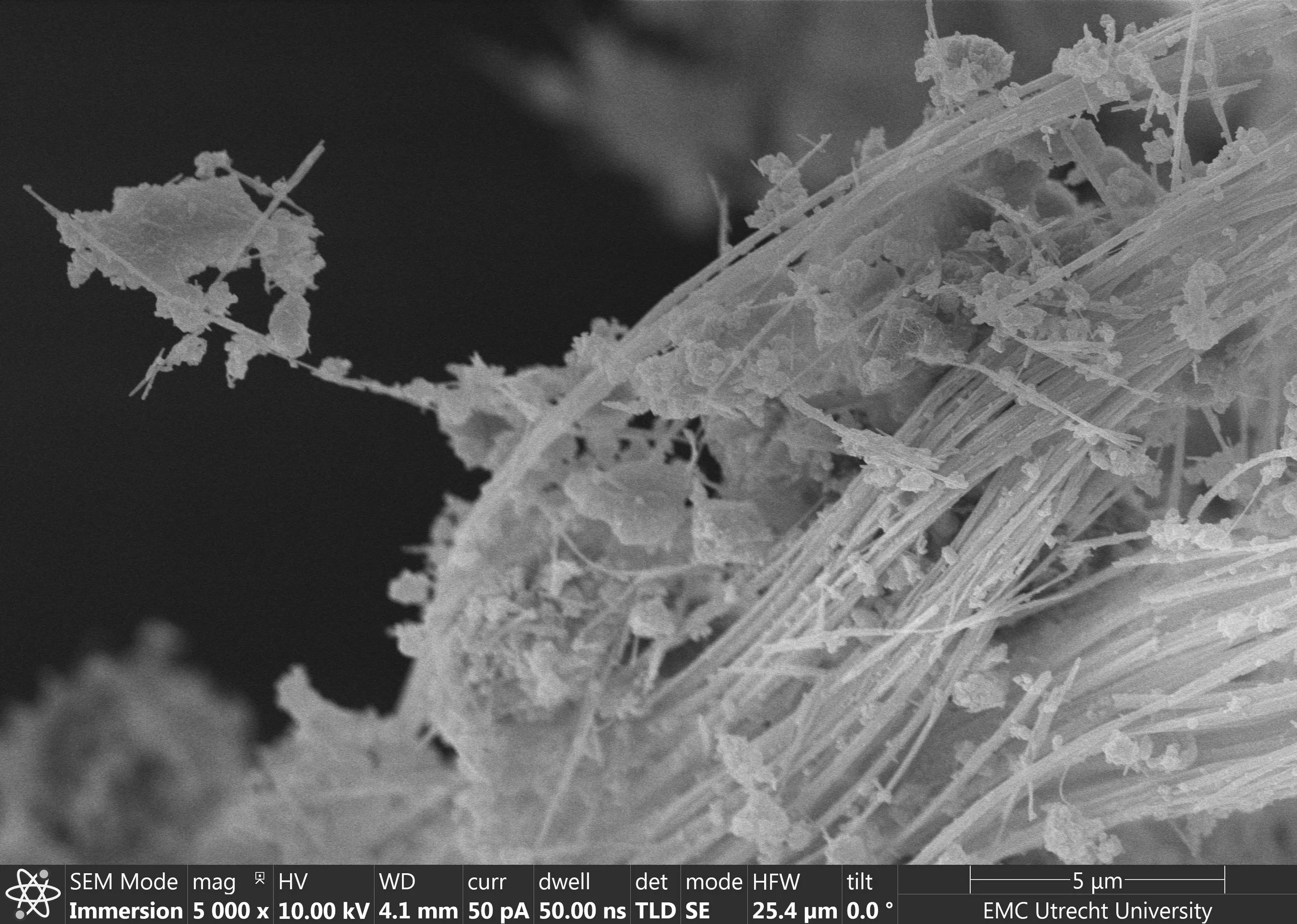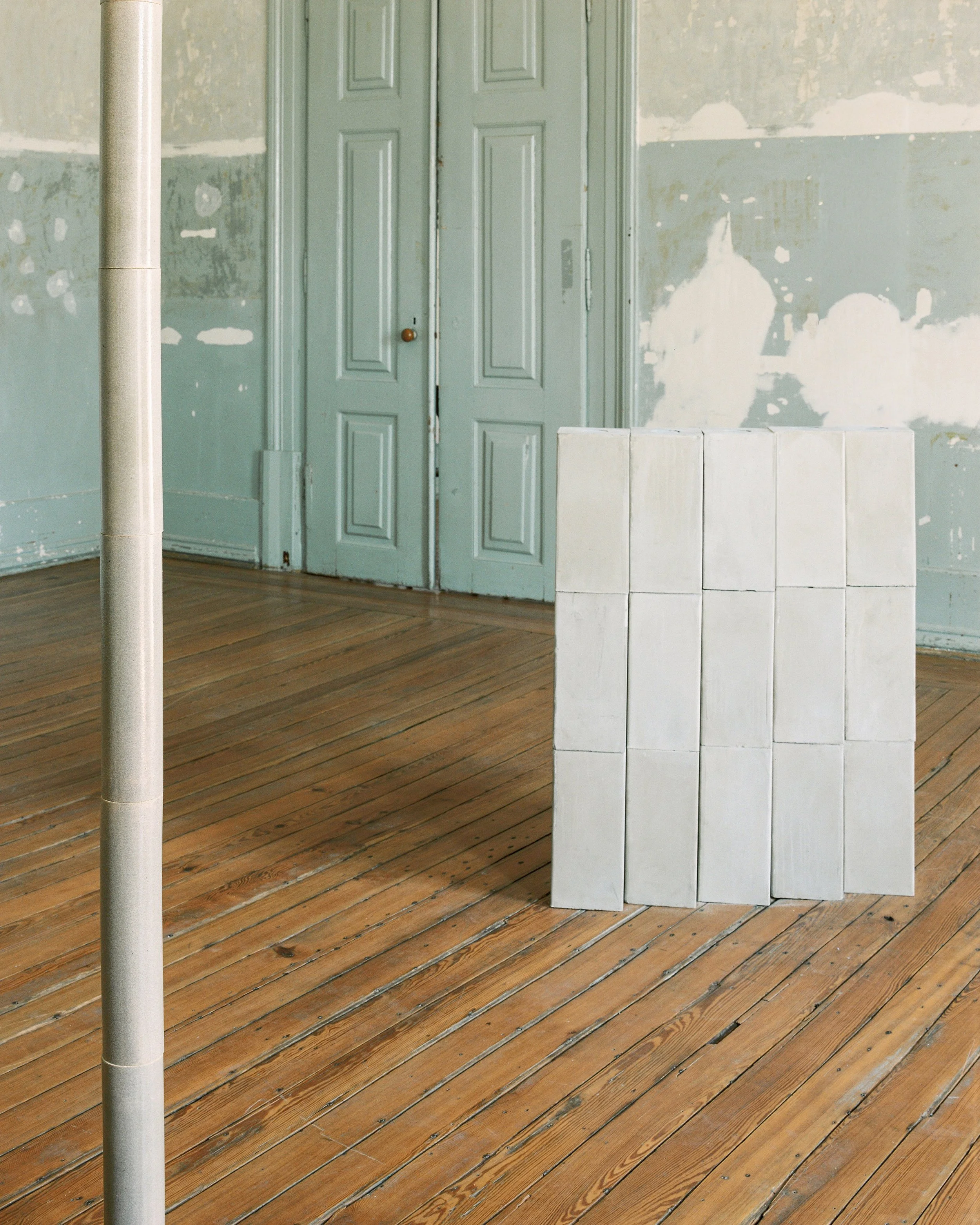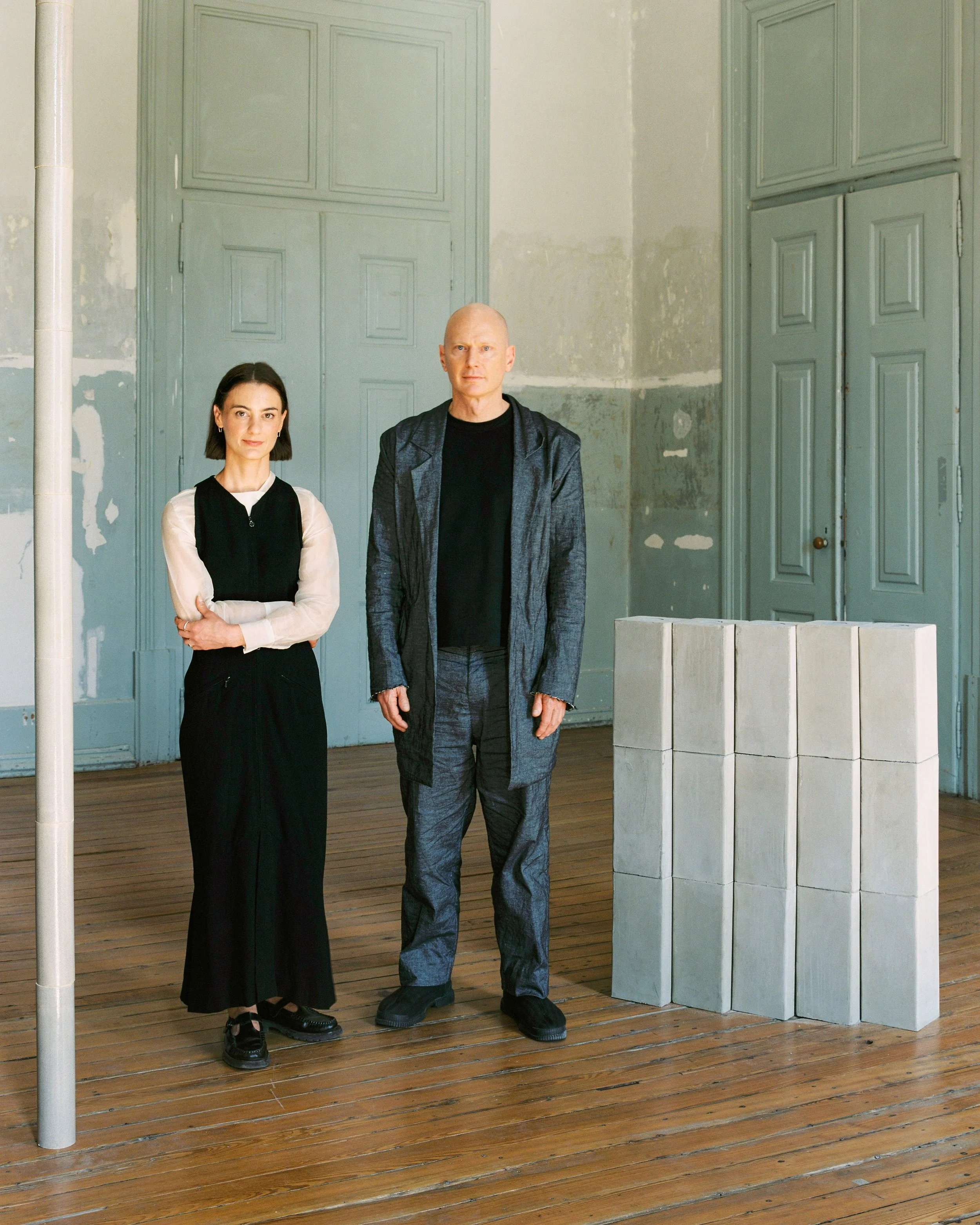09.ED.15 Redux
Installation, Lisbon Architecture Triennale
2025"Unquenchable, Inextinguishable" - From the ancient Greek σβεστος: “asbestos”
“09.ED.15 Redux” reinterprets asbestos, historically a dangerous building material, now transformed into harmless, carbon-negative by-products with architectural potential. The installation shows a shift from asbestos's industrial exploitation to a narrative of humility and innovation. Reflecting the Triennale’s theme, ‘How Heavy is a City’, it addresses the environmental legacy of asbestos in urban and suburban areas and offers a vision for sustainable urban development through new technologies. The exhibition takes the form of a built installation using these new materials in Lisbon, advocating for a transformative approach in material culture and architecture.
Mineral glaze made from former asbestos. Benedetta Pompili.The curiosity, inventiveness and ambition which humanity has relentlessly applied to natural materials underpins the standard narrative of the progress of cities in history. However this “progress” is now everywhere in question, as cities destroy the environments which support them and increasingly harm the lives of their inhabitants. In the case of asbestos, the city’s materials can be fatal.
Asbestos, once a construction “miracle material”, kills hundreds of thousands of people each year and creates millions of tons of contaminated waste landfill worldwide. Yet, what is asbestos? Asbestos is a naturally occurring mineral - a part of the earth. It rests in the ground like other minerals. Asbestos is not “toxic” like human-made poison or radiation. If disturbed and inhaled or ingested, asbestos is harmful to humans. Disturbing asbestos by mining and placing in building products is entirely a catastrophe of our own making. It joins a growing list of exploited natural materials that are now harming us.
However humanity’s curiosity, inventiveness and ambition remains, and can be redirected. It has the potential to be more wisely and less cynically deployed. The historical precedent for the redirection of human focus is long and promising. Around 8% of global carbon emissions are from cement production, yet renewed asbestos minerals can replace up to a quarter of the cement traditionally used in it. The potential impact of this substitution is profound, offering a scalable path toward dramatically lowering the carbon footprint of construction worldwide.
'MACMA' concrete made of former
asbestos material. Asbeter.For the city and its materials, the focus should move to within its own boundaries, not outward to ever more compromised wild environments. It should be to the radical repair, reuse and rediscovery of materials the city already has. In the case of asbestos, waste building materials which include the mineral can be recrystallised to form new, safe materials. These new materials have great potential: for the replacement of cement in construction, and use in architectural materials like renders, tiling and glazes. In addition, reuse and adding asbestos to a circular economy has the potential to unlock large landfill sites, returning them to use or as rewilded environments. Ageing buildings constructed with asbestos too, can be safely recycled into non-hazardous materials. The city can begin to return to its earlier idea as a platform for improvement of human life, and its natural spaces and peripheries recover as living ecologies.
Asbestos breakdown process.
Images courtesy of Asbeter.Lisbon Architecture Triennale
Besley & Spresser
Asbeter
Benedetta Pompili Studio
SDA Structures
Cria, Besley & Spresser
Rui Cardoso
Thomas Li
Kleopatra Ananda
Jasmine Sharp
Brickworks
AC Minerals Group
European Union
Renewi
Just Transition Fund
Provincie Noorde-Brabant
Betonova
Client
Concept and Design
Collaborators
Structural Advice
Construction
Photography
Research Collaborators
Support